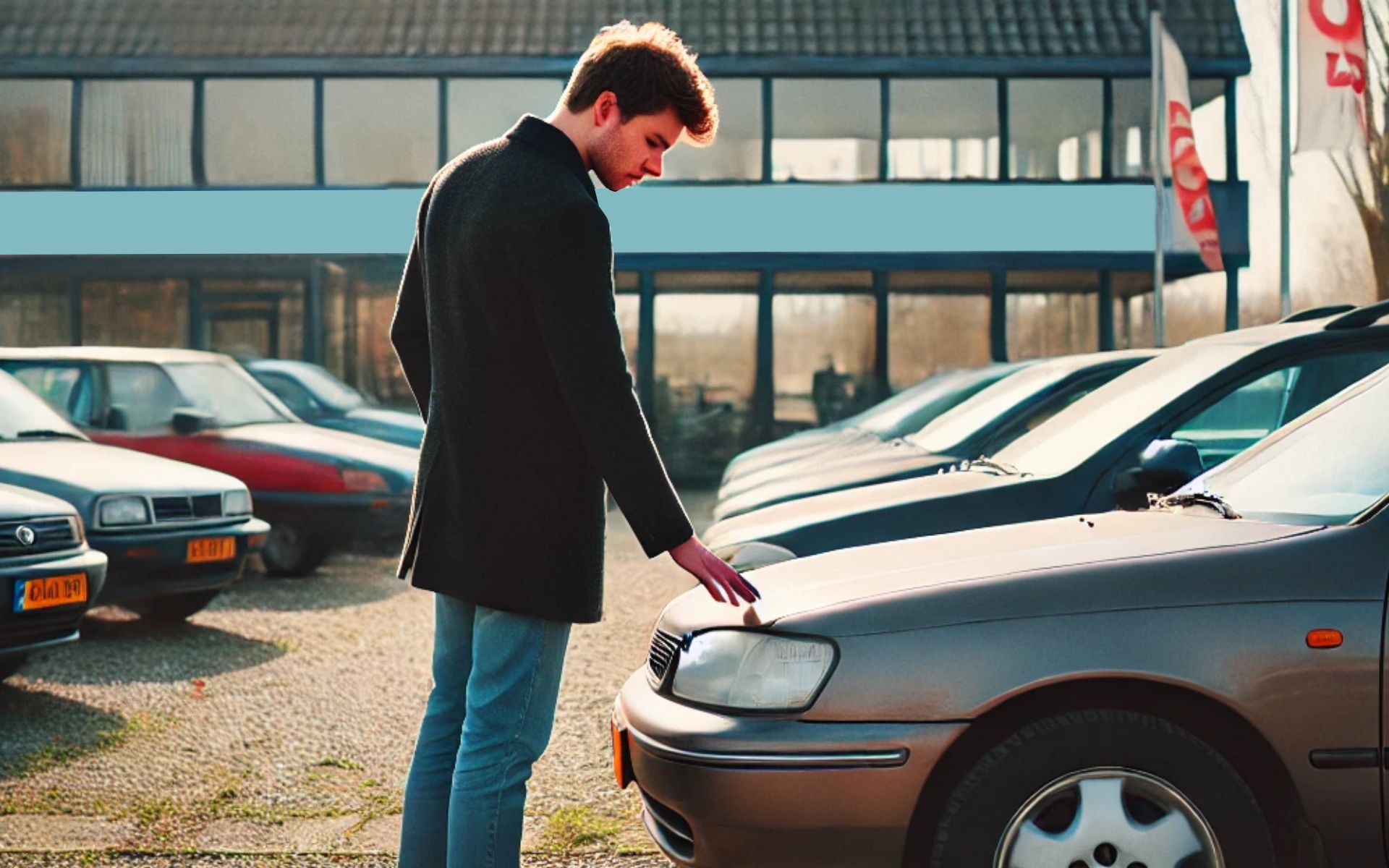Buying a used car: 30-point checklist
30-point checklist of occasion buying
Buying a used car isn’t something you do every day, of course.
It’s quite a big expense.
To make sure you spend your hard-earned dollars on a good car, it’s important to be on your front foot.
So read up on the model you are interested in.
That way, you are already a little bit aware of what is to come.
To get you off to a good start, we’ve also put together a 30-point checklist.
It’s a guide if you’re in the market for a used car.
1. Check the Vehicle History
Use tools such as Carfax or the RDW to check for previous accidents, number of owners and maintenance history.
2. Vehicle Identification Number (VIN) Verification.
Check that the VIN number on the vehicle matches the paperwork to prevent fraud.
3. Exterior inspection
Check for dents, scratches and rust.
Also note color differences in the paint, which may indicate previous repairs.
4. Underside of the car
Check for rust, oil leaks or other fluid leaks.
These may indicate serious problems.
5. Tires and rims
Check the condition of the tires, including tread depth and wear.
Also note damaged or bent rims.
6. Lighting
Check that all headlights, brake lights, turn signals and interior lights are working properly.
7. Windows and mirrors
Check for cracks or damage in the windshield, rear window and mirrors.
8. Doors and windows
Check that all doors and windows open and close smoothly.
Also test the power windows.
9. Interior
Check the condition of the upholstery, carpets and dashboard.
Look for tears, stains or damage.
10. Air conditioning and heating
Test the air conditioning and heating to make sure they are working correctly.
11. Dashboard lights?
Check that all warning lights on the dashboard are working and do not indicate malfunctions.
12. Audio and navigation system
Check the operation of the radio, CD player, Bluetooth and any navigation systems.
13. Seating comfort
Check that the seats are comfortable and all adjustment mechanisms are working properly.
14. Speedometer and odometer
Check that the speedometer and odometer are working properly.
This is crucial for accurate speed and distance measurements.
15. Brakes
Test the brakes in a safe location.
Watch for strange noises and make sure the vehicle pulls straight when braking.
16. Steering
Check that the steering wheel turns smoothly and there is no play.
Also test the power steering.
17. Suspension and shock absorbers
Test the suspension by pushing the vehicle up and down.
It should rebound smoothly without any side noises.
18. Gearbox
Test both automatic and manual transmissions for smooth and accurate shifts.
19. Clutch operation
In manual transmission cars, the clutch should operate smoothly and without slipping.
20. Motor
Check that the engine runs smoothly without strange noises or excessive smoke from the exhaust.
21. Fluids
Check the level and condition of the engine oil, brake fluid, coolant and windshield washer fluid.
22. Exhaust
Check for rust or holes in the exhaust.
Also watch for abnormal noises that may indicate a problem.
23. Oil leaks
Check under the hood and under the vehicle for signs of oil leakage.
24. Battery
Check the age, condition and connections of the battery.
Test if the vehicle starts without problems.
25. Hoses and belts
Inspect all hoses and belts for wear, tears and signs of aging.
26. Radiator
Check the condition of the radiator and coolant level.
Watch for signs of overheating.
27. Fuel System
Check the fuel lines and filter for leaks and blockages.
28. Chassis and suspension
Inspect chassis components and suspension for wear or damage.
29. Handbrake
Test the handbrake on an incline to ensure that it functions properly and holds the vehicle in place.
30. Test Drive
Take a comprehensive test drive to assess the overall driving experience.
Pay attention to comfort, performance and sounds.
Finally, follow your gut
Finally, when buying a used car, follow your gut feeling.
When in doubt, don’t do it.
After all, you can only spend your money once.
The feeling has to be right.
And when in doubt, let the buyer know why you are in doubt.
Be honest, patient and ensure good and clear communication.
Together you can always work it out.
The most important thing is to remain friendly, even if the buyer seems irritated.
And if it doesn’t feel right in the end?
Then just thank them for their time and look for another car.

